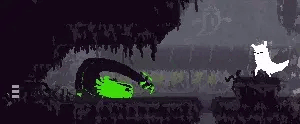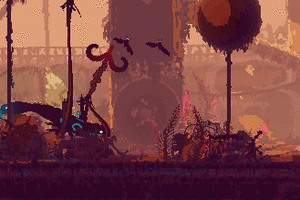Hello! My name is Logan Sullivan, a CS major with a minor in Math.
I chose this class because 3D printing and all the many things it can accomplish, both functional and artistic, has always fascinated me. Outside of a few small cases though, I haven’t really taken many opportunities to actually use 3D printing, so what better way to force myself to actually use it than taking a class on it?
For something closer to my own wheelhouse, a project that’s always intrigued me is Rain World, developed by Videocult Studios. One of its main features is an intricate digital ecosystem of creatures that live, fight, and run with or without you. Not only do different species have wildly different abilities and behaviors, but individuals amongst those groups have a multitude of personality scores which determine subtly different characteristics, like how easy they are to scare, or how curious or aggressive they are.
In order to best allow these creatures to express their nuanced behaviors and tendencies, the game uses procedural animation. Instead of one sprite with a list of pre-made animations, Rain World’s creatures rely on multiple individual sprites which get puppeted by real-time algorithms. They move with extreme fluidity and high levels of fine detail, able to make subtle movements like twitching, or move in erratic, unpredictable, lively manners.

Each type of creature handles its animations differently, but in general it can be boiled down to a collection of physics points, like segments on a Monster Kelp; the body, head, legs, and tail of a Lizard; or the core and long tentacles of a Daddy Long Legs. Motions from the creature, constraints on its body, and physics interactions with its surroundings dictate how these points move. The specifics for how each creature will try to move depends on its species and the personality scores unique to that individual. From there, cosmetic sprites are attached, each of which can have unique variations like tint, level of spikiness, length, width, being one of several base images/types, and so on.



Hey Logan! This use of computational design is so interesting to me. The way Videocult Studios makes these creatures seem alive is amazing. With the inclusion of the personality score, you have creatures that behave entirely differently from one another, leading to various interactions. Not to mention, the artwork looks beautiful! Thanks for doing research on this. I’ll have to check it out myself!